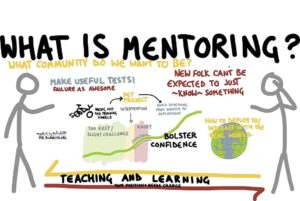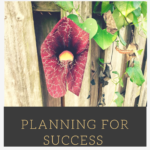 Are you keeping up with the changing digital landscape? It’s changing the way we do business.
Are you keeping up with the changing digital landscape? It’s changing the way we do business.
If you have been searching the internet for inspiration about what you might do in the future you are probably aware that the future of work is changing. This is because the digital landscape has change the way we collaborate, our mindset, and the way we gather information (learning). The big question is are you prepared for it? What have you already noticed?
What change have we already been through? At almost 50 (generation X) I have seen lots of change in the way I communicate and the business tools I have used to collaborate and do business. No one stopped and asked if I was ready. I was eager to experience it to be honest and embrased it. I have seen work change from being repetitive and time consuming to become replaced by technology and efficiency. I adapted and changed because I had to and because it was exciting.
My changing landscape
When I started work in the late 80s fax machines were just coming into my workplace, there were no cell phones, no ATM machines and the home computer was for playing games on. There was not social media. If you were going to be late home you had to find a phone box or ring from work. If you broke down you walked to someone house and used their phone. If you wanted to know what a shop had to sell you had to go in or look at a catalogue or advert. We got our news on the radio or TV at the appointed hour. If you wanted to research something you had to go the library. If you wanted to read a book you bought it or got it out of the library.
If you wanted to communicate with a work colleague, family or friends you wrote a memo, letter or picked up the phone. Or better still you walked round the office to went to their home to speak to them in person. People were not so accessable and we had to wait to tell them things. Memos and letters were longer because you saved it all up to put in one document. Now a days we do everything in bit size pieces. Sometimes we send our thought on social media or text as they come to us. Maybe we used a diary for this before or wrote it down in poetry or songs…….imagine not being able to tell your partner something when you thought of it- ping off goes a text.
In the 90s I remember getting my first “flip phone”. It was a great comfort to think I could text my partner about my location so we could meet up after work or I could get help if I broke down in my car. It was quite expensive to make calls so I really treated it as an emergency device for calling. I was listening to music on my stereo or walkman. I was using my camera for photos and having them printed out from a role of film. I needed a video camera for video.
I taught myself to type so I could use my home computer to type up assignments for university (when I went back to uni after 10 years working so we are in the 90s now). I taught myself to use email and started sending emails to friends. I remember one friend saying she thought it was funny how I wrote like I was talking to her. She thought I should only use it to send a quick message and if I wanted to talk I should phone. I remember sending emails at work and treating it like a letter. I would save up things to say and send one long email.
In the early 2000s I was using the internet for booking flights, reseaching things that interest me, and checking emails when I travelled. I was using my home computer to do my accounts, business documents and communicating with work and friends who were out of town. When I travelled I took photos or video on my camera and I left my phone at home. My only form of commuication with people back home was sending a postcard, letter or checking my emails in an internet cafe. I used an walkman playing cds for music. If I wanted a job I had to look in the papers, and post in an application, then go to an interview. If I wanted to buy something I could search about it to see where I need to go to buy it. It wasnt the norm to pay online but you could email an order.
Digital landscape today
These days, I generally don’t go anywhere without my phone. I use it for my emails, internet searches, bookings, games, phone calls, texts, social media, business information storage in the cloud, my calendar, to take bookings for business, listening to music, accessing stored doucents in the cloud, taking photos and videos, read the news, do my banking and to tell me the time. When I travel I take just my phone and I can Skype or Facetime, or use my social media to communicate and share realtime what I am doing, where I am with whome I like.
Workwise I have seen that more and more people are working from home. Some are working remotely for someone else while others are working for themselves. Working around family is a big focus. Information is more accessable, its being stored electronically in the Cloud. People are collaborating through online meetings such as Zoom and Skype. Technology has changed the way we do business. We dont need to be in a clients office to speak to them, do training for them or with them, having a meeting or exchange ideas. If I want a job I apply online, I network with people imporant to my business or future business online. If I get an interview it wouldnt be unusual to be interviewed by Skype. If I want to order something I can seach online for the best price or product. Then I can order and pay right away online and it will be shipped to me.
What does this all mean for the future of work?
Our epectations have changed (mindset). We expect things to be at our finger tips. We expect businesses to get back to us quickly and to find what we want in an instant. We no longer expect to have to go to the shops for items. Dispite social media we are still meeting up to socialise (collaboration). We are just sharing the experience with more than just those who are there.
People want thing fast, in bite sizes and they want to share their experience. They need to see and experience your product so photos or video are important. You need a presence online so you can be found, so your consumer can learn about you, and you need a way of interacting online with customers to create a following. Are you providing that? What does your digital landscape look like for your business? Do you have brochures, messages or busy ads that are long and boring. Are you refusing to get conected with social media and unsure how to take video, share experiences and photos of what you do? This is the future NOW.
What can you do to improve your digital landscape right now?
Its often easier to cope with this change when you are young. I think thats because you dont have other things like kids and financial pressures to worry about. Some people are better with change. But change is all the current generation know. The digital landscape is in their face and its changing fast. If you are a gernation X like me then you need to think about the changing nature of work and the fact that the next generation, the millenials are now in the workforce in bigger numbers and they have grown up with laptops, phones, social media and the world of instant gratification. They are your workforce and your consumers and are just plain expecting different things than you have grown up with. As parents we are grappling with the changing digital landscape our kids are exposed to. My advice is to learn about it now. Engage with them in their world as this is the next generating of your customers. I will explore more about the millenials in my next blog. You cant afford to miss it.
Kerri Bainbridge
One half of the Anywhere Team NZ
Colaboration, Mindset, Learning.
www.anywherebusiness.co.nz









